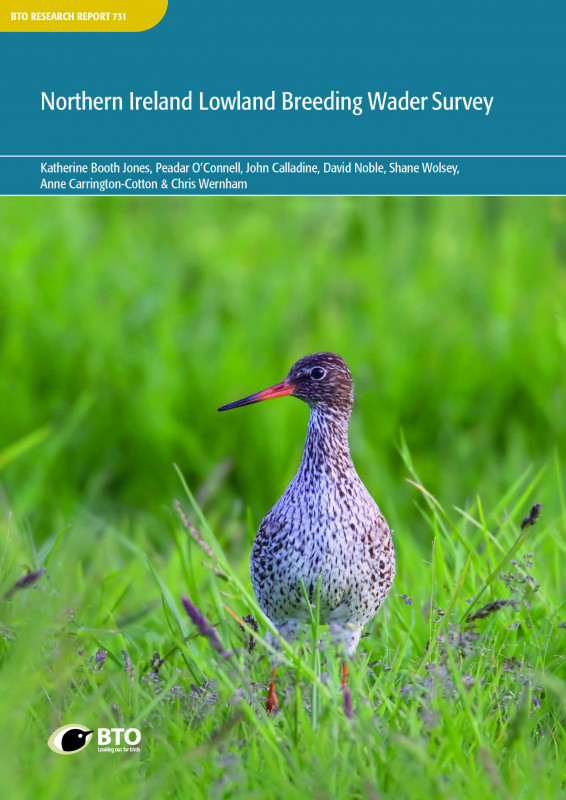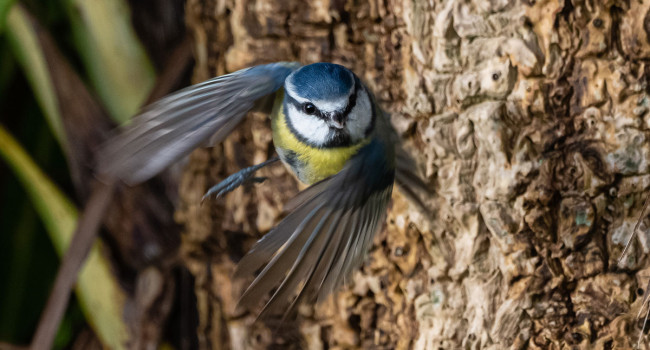Northern Ireland Lowland Breeding Wader Survey
Author(s): Booth Jones, K., O’Connell, P., Calladine, J., Noble, D., Wolsey, S., Carrington-Cotton A. & Wernham, C.
Published: February 2021 Issue No.: 731
Journal: BTO Research Report 731
ISBN: 978–1–912642–21–2
Download article 8.85 MB application/pdf
Abstract
1. Numbers of breeding waders are falling throughout the UK and increased agricultural intensification is amongst the causes of decline in species such as Lapwing, Common Redshank, Common Snipe and Eurasian Curlew on the island of Ireland. During a tetrad-based survey of Northern Ireland in 1985–87, lowland grasslands held 51% of the total number of breeding wader pairs recorded.
2. In 2018 and 2019 BTO conducted a re-survey of lowland sites to measure changes in the number of breeding wader pairs present and of habitat characteristics in the 30 years since the previous survey, enabling future conservation interventions to
be focused at sites of particular significance.
3. Across the two years, 75 sites, each of which typically consisted of seven fields (SD = 6, range 1–32) and covered on average 34 ha (SD = 44 ha), were surveyed in lowland damp grassland regions around Lough Neagh, the Blackwater Catchment, Upper Lough Erne and Lower Lough Erne. A combination of volunteers, professional fieldworkers and RSPB staff surveyed the sites, recording counts of breeding waders, field-level habitat characteristics and site-level management and conditions. The survey methods and data recorded were consistent with those used in the original survey of 1985–87, to enable direct comparisons between the time periods to be made. However, counter to original expectations no habitat data were recoverable from the 1985–87 survey; a comparison of habitat and management conditions between the two time periods was therefore impossible. Only one site was surveyed in the Fairy Water Bogs; therefore, this region was excluded from further analysis.
4. Although survey participants recorded at least one breeding pair of Lapwing, Curlew, Redshank or Snipe at all sites in the late 1980s, 64% of sites showed no evidence of breeding wader presence in 2018–2019. Declines in the number of breeding wader pairs per site were widespread throughout the different regions surveyed, although the Blackwater Catchment was the worst affected, suffering a decline of 98% since 1985–87. Across all sites surveyed between 1985–87 and 2018–19, pairs of Lapwing declined by 70%, Curlew by 80%, Redshank by 76% and Snipe by 71%.
5. Analysis of the change in the number of wader pairs per site recorded during the breeding seasons of 1985–87 and 2018–19 using zero-inflated generalised linear mixed models (GLMMs) revealed that there was a significant decline in breeding waders of all species and collectively across the surveyed sites in all regions, but that the Lower Lough Erne region had retained generally higher numbers of breeding waders than elsewhere.
6. Chi-squared (Χ2) contingency tests were carried out to investigate associations between wader presence in the 2018–19 survey and field-level habitat conditions. Wader presence was significantly associated with all the grassland categories (rushes, tussocks, improved). Although flooding was only present in 13% of fields, these fields made up 45% of the total fields with breeding waders present. Flooding and damp areas showed a highly significant association with wader presence, and Curlew were only found in fields that contained both damp and dry conditions. Management and condition characteristics did not differ markedly between the total sample of fields and those fields containing breeding waders.
7. Overall, despite previously being a highly important habitat for breeding Lapwing, Curlew, Redshank and Snipe, lowland damp grasslands in Northern Ireland have undergone a drastic decline in their breeding wader numbers in recent decades. Many sites no longer have breeding waders present on them, although sites to the west of the country are more likely to still hold pairs. In lowland damp grasslands, waders were associated with fields containing both improved and rough grass, and fields with damp or flooded areas were important, although many sites were found to have evidence of draining.
8. A better understanding of predation pressure, habitat use and the overall population of breeding waders across the whole country and, specifically, understudied regions in the west, namely the Sperrins and Fairy Water Bogs, would improve targeting of conservation measures to preserve breeding waders in Northern Ireland.
Notes
This work was funded by the Northern Ireland Environment Agency. Thanks to the volunteers, professional fieldworkers and RSPB staff who surveyed the sites, recording counts of breeding waders, field-level habitat characteristics and site-level management and conditions. Thanks also to the landowners who so generously provided access to their land.









Share this page